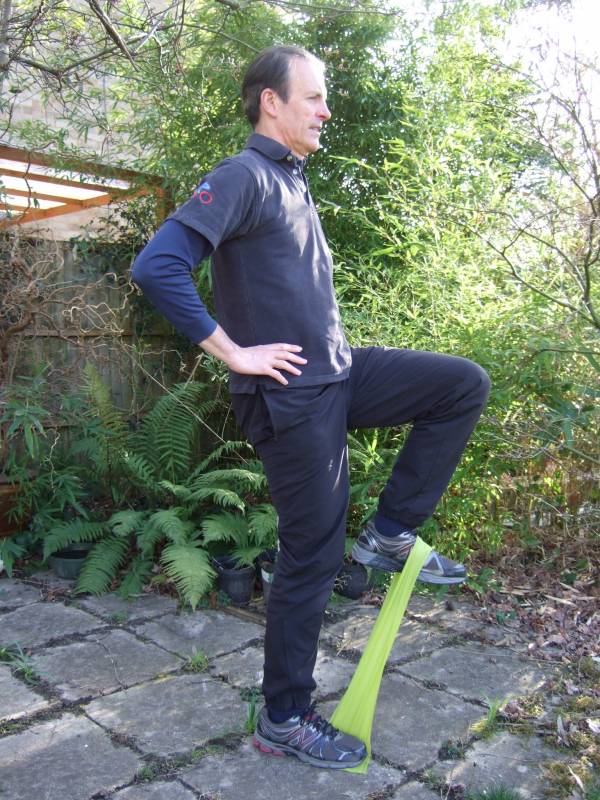In my last article, I showed you how using shorter cranks might help you achieve better results on your bike. In this article, I am going to show you some simple exercises that will improve your pedal stroke and help you produce a little more power.
First: The Test
One of the frequent contributions to loss of power I find when testing cyclists is a lack of hip flexion at the apex of the pedal stroke as the rising leg goes over the top. What sometimes happens is that the hip flexors lift the leg so far and then right at the end are unable to squeeze the leg that last additional bit. As a consequence, the driving leg descending on the other side has to push over those last few degrees.
There is a simple way of testing this out for yourself with your cycle on a turbo trainer. An indoor cycling class bike is not good for this test as the large flywheel will mask the result. Using your own bike is best as it truly represents what’s happening for you.
How to do the test:
- Sit on your cycle, mounted on the turbo and with a low resistance.
- Rest one leg on a nearby step at bottom bracket height and cycle with one leg.
- Take it slowly to start and pedal for about four minutes.
It will readily become apparent if that single leg is able to lift itself on the top of the pedal stroke. You may hear your cleats make a noise at the top or the sound of the turbo may be uneven. You may also find yourself rocking on the seat from side to side if the hip angle cannot be reduced sufficiently.
“The benefit you will see is more available power as each leg will not have to help the other one over the top.”
You can test different positions such as on the top of the bars and the drops. The drop position is usually worse due to the small angle between the body and upper thigh. You may also find the leg you are testing tires quickly. After a few minutes, swap legs and see if they are the same or one is worse than the other.
Exercise 1: One-Legged Pedaling
This leads us to the first exercise to fix the problem: simply repeat this one-legged pedaling for about one minute on each side. Do this for ten reps, which comes out to a twenty-minute session.
This can easily be built in to a warm up or cool down of a workout. Keep doing this exercise a little at a time, but often. Try four times per week until you are able to sustain four minutes of steady speed on each leg on the drops or in your time trial position.
Exercise 2: Leg Lifts
The second exercise can be done off the bike and requires only your body weight or the assistance of a large band:
- Stand on one leg either supported by your arm on an adjacent wall or unsupported if you would like to include a balance element to this work.
- Lift the leg closest the wall (if using a wall for support) as high as you can and squeeze to close the hip angle.
- Lower the leg and repeat this for ten reps or thirty seconds.
- Swap sides and repeat until you have finished ten sets on each leg.

If you wish to progress this exercise, loop a band around the lifting foot and secure it by standing on the free end with the support leg. As you lift the leg against the band, the additional resistance will overload the hip flexors progressively at the end of the flexion.
As before, do ten sets of ten reps on each leg. I suggest four times per week. Try day pairs, such as Monday and Tuesday and then Thursday and Friday, if you will be riding on the weekend.
The Benefits of Both
Test yourself every couple of weeks and you should notice that it becomes easier for each leg to drive itself at continuous speed during single-leg pedaling. The benefit you will see is more available power as each leg will not have to help the other one over the top. You may also find that a reduction in any hip rocking that compensated for your lack of hip flexion will make your ride more comfortable.
Read more about cycling:
- How to Reduce Lower Back Pain From Cycling
- Training During the Cycling Season
- How to Get Faster at Running, Cycling, and Swimming
- What’s New at Breaking Muscle Today
Photo 1 courtesy of Shutterstock.
Photo 2 courtesy of Simon Kidd.






